Gardening 101
Let’s take some time to review the fundamental principles of gardening everyone should know. Bookmark this page for reference to make it easy to refer back anytime you need to.
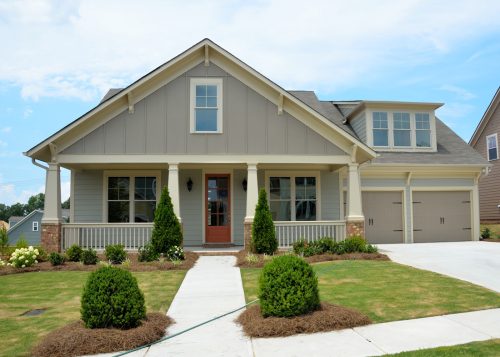
EXPOSURE
Exposure means how much sun or shade a plant receives and it is measured in hours. As the seasons change and the sun migrates to a more southern sky, the amount of sun or shade your plants receive changes. Also, since the morning sun is cooler than the hot afternoon sun, there is a difference in how these types of exposure are defined as you’ll see below.
Full Sun – Greater than 6 hours of sun, up to and including all-day sun
Part Sun – 4-6 hours of sun per day, with most of it being in the afternoon
Part Shade – 4-6 hours of sun per day, with most of it being in the morning
Full Shade – Less than 4 hours of sun per day
All of the plants on our website list what kind of exposure they prefer. To find plants for a specific exposure, use the search menu running down the far-left column on our plant pages.
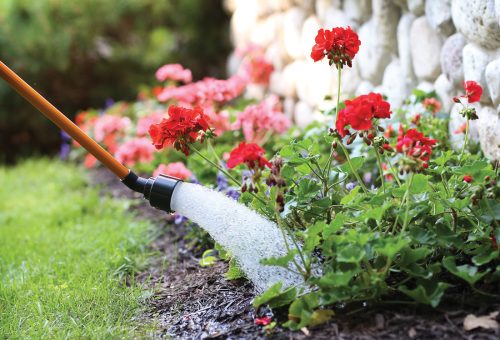
WATER
All plants, even those that are drought tolerant, need some water to live. Many factors go into knowing how much water a plant needs, but as a general rule, most ornamental plants require more water than your lawn. It’s also true that most potted plants need to be watered more often than plants growing in the ground. We’ve compiled this article to help you gain a better understanding of how much water the plants you are growing will need each week.
A few quick tips on watering:
- Don’t wait until your plants wilt to water them. Check the soil regularly to see if it is time to water. When it is dry to the touch one inch down in the container and the container is light, it’s time to water.
- When hand-watering plants, direct the stream of water towards the soil, not the foliage. The roots are what will take up the moisture, not the foliage.
- Water containerized plants until the water flows out the drain hole in the bottom of the pot. A little sprinkle is not enough water to reach the roots.
- Water early in the morning to allow the foliage to dry before sunset. Keeping the foliage dry helps to prevent diseases from moving in.
ZONE
Your USDA hardiness zone is important to know if you are growing the kinds of plants that return every year like perennials, shrubs, hardy vines and grasses. If you don’t know your zone, click here and enter your zip code.
The hardiness zone map we use was created by the U.S. Department of Agriculture using climate records averaged over many decades. Hardiness zones are based on the average annual minimum temperatures for each zone. At Garden Crossings, we ship plants to people in zones 2-9, which covers the contiguous 48 states. The smaller the number your zone is, the colder your climate is. For example, parts of northern Minnesota are zone 3 but southern Florida is zone 9.
If a plant is listed as hardy in zones 5-8, that means it is expected to grow and survive the winter in those zones. It would not be expected to overwinter in zones 4 or colder. In zones warmer than 8, the plant would overwinter but would not likely tolerate the heat and may fail to thrive.
Annual plants, meaning those that people in most climates grow for one season and then dispose of, do have their hardiness zone listed on our website. You will notice their zones are very high, such as zone 10-11 for petunias. That means that petunias can survive the “winter” in zones 10-11, but they are grown as an annual in all zones cooler than zone 10.
Plants grown in the ground versus in containers are affected differently by the cold winter’s temperatures. Generally, plants overwintered in the ground are better insulated than those growing in containers. We cover this topic in depth in this article.
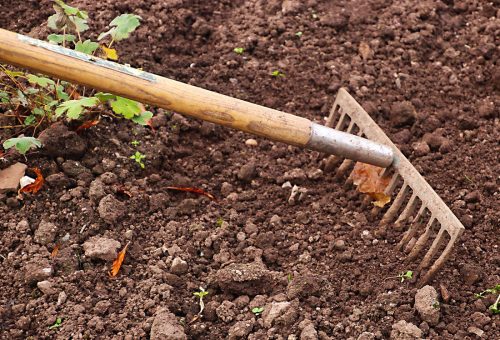
SOIL
Think of soil as the “home” you are giving your plants. Native garden soil types range greatly throughout the United States but there are three basic ones that are most common: sand, loam and clay.
The type of soil you have will influence how often you’ll need to water. Sandy soils tend to be very well-drained, contain fewer nutrients and minerals, and dry out quickly. Loam soils are ideal for many garden plants because they are well-drained, are naturally rich in nutrients and minerals, and they retain just enough moisture to keep plants most happy. Clay soils tend not to be well-drained and retain moisture well, sometimes too well and that can damage a plants’ roots. They are naturally rich in minerals.
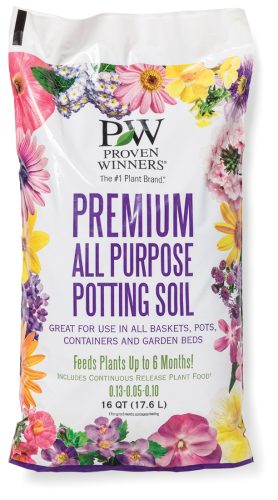
Plants growing in containers need a different kind of soil than those growing in the ground. That’s because the soil in containers needs to be lighter and more porous so it doesn’t become compacted and limit root growth. Potting soil provides better drainage than garden soil and it is rich in nutrients. Often, a slow release plant food is included in bagged potting soil.
This article talks in detail about what kind of soil is best to use in your containers, if you should replace it each year, and whether or not it’s a good idea to fill the bottom of your containers with rocks
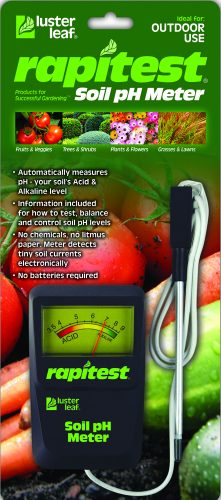
One more important thing to understand about your soil is that it has a pH—a measure of its acidity or alkalinity. The pH affects a plant’s ability to absorb nutrients from the soil. A simple pH meter you pick up at the hardware store (like the one shown here) will help you find out your soil’s pH. It is measured on a scale of 1-14 with 1 to 6.5 being acidic, 7 being neutral, and 7.5 to 14 being alkaline. Since the pH of garden soils almost always range between 3.5 and 9, that is the scale your pH meter will display.
Many plants can tolerate a broad pH range from somewhat acidic to somewhat alkaline, but there are some plants that prefer more highly acidic or alkaline soils. If a specific pH is important to a plant’s health, it is typically mentioned in that plant’s description.
It is possible to shift your soil’s pH a number or two in either direction if needed. To make it more acidic, apply Espoma’s Soil Acidifier. To make it more alkaline, use Espoma’s Garden Lime. Keep in mind that repeat applications will be necessary to maintain the pH you are aiming for by using these products.
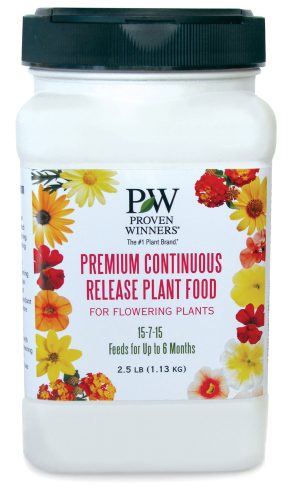
FERTILIZER AND SOIL AMENDMENTS
Like we described in the Soil section above, different types of soils contain different amounts of nutrients and minerals. While what is present in your native soil might be sufficient for growing trees and other hardy plants, most flowering annuals typically need to be given supplemental fertilizer to produce flowers prolifically over the entire season.
Whether you are growing annuals in the ground or in containers, we recommend adding some continuous release plant food into the hole when you plant them. This kind of fertilizer is released slowly over a period of a few months, continuously providing a small amount of essential nutrients to your plants.
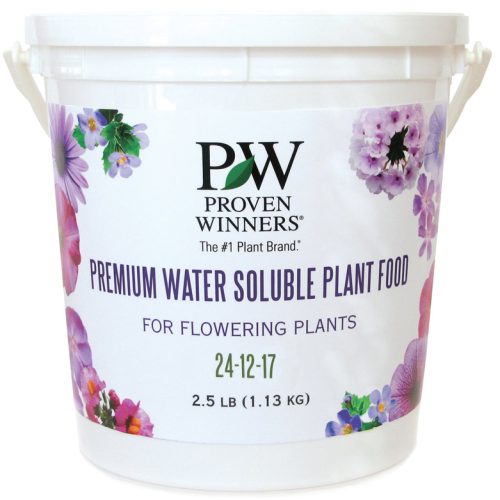
In addition to using continuous plant food, annuals that are grown for their prolific blooms should also be fed with water soluble plant food every third time you water. That means during the cooler parts of the year when your plants are growing more slowly and you are watering less often, you’ll also be feeding less often. But during the warmest part of the season when your plants are growing by leaps and bounds and you are watering very often, you will also be feeding them more often.
Perennials and shrubs do not need to be fed as often as annuals. They absorb the nutrients they need from your native soil. If you want them to grow faster or bloom more prolifically, you can feed them in the spring with a slow release plant food like Espoma’s Plant-tone. If you live where the growing season is very long, you can feed them again midsummer. Avoid feeding any hardy plants after midsummer as doing so will encourage new growth that may not have time to harden off before winter.
We offer a full line of Espoma organic products to help feed your plants and amend your soil. Find them all here.
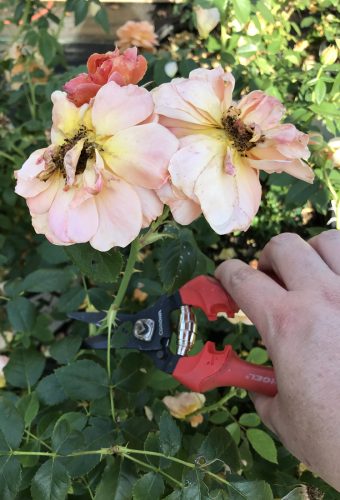
PRUNING AND DEADHEADING
This is a big topic, and we encourage you to read up on it specifically for the types of plants you are growing. Here are a few basic tips:
- Plants will grow even if you never prune or deadhead them. These are not essential tasks for a plant’s survival. If you want to prune, have a reason for doing so.
- Deadheading, meaning removing the spent flowers before they go to seed, may result in a plant blooming for a longer period of time or may stimulate a plant to produce a whole new round of flowers. However, not all plants will reward you in this manner. Sometimes, deadheading is just something you do for looks. This blog explains the details of deadheading.
- Pruning plants, especially when they are young, helps them grow into a fuller, more shapely plant over time. It’s why we prune the plants we grow before we ship them to you. In the long
- run, you’ll be glad you pruned. As a general rule, never prune more than 1/3 of a plant at one time.
- Pruning is all about timing. There are good and bad times to prune, and they are specific to the types of plants you are growing. Pruning at the right time can lead to more flowers and robust new growth. Pruning at the wrong time can lead to no flowers or something worse. This blog is a good place to start when learning about when to prune.
SEASONAL GARDENING TASKS
Gardening is a process, not an event. There is something you can be doing in the garden in every season to help it flourish. Check these seasonal maintenance guides to see if there is something you’ve been missing that could help your garden be even more bountiful.
Looking for more plant care tips? Scroll through our articles on this helpful page.
